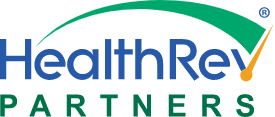
The home health industry is undergoing a significant transformation, driven by advancements in technology and the growing demand for cost-effective, accessible healthcare solutions. Implementing automated workflows has emerged as a powerful strategy to improve operational efficiency, enhance patient care, and drive positive outcomes.
Here’s how automated workflows are revolutionizing home health:
1. Enhanced Efficiency:
- Automated scheduling and appointment reminders free up valuable time for clinicians, allowing them to focus on patient care.
- Automated data capture and reporting reduces paperwork and manual processes, leading to faster turnaround times. At HealthRev Partners, we have joined forces with Worldview to streamline clinical documentation.
- Automated billing and claims processing streamlines financial operations and improves cash flow.
2. Improved Patient Care:
- Remote patient monitoring enables real-time tracking of vital signs and health data, allowing for proactive interventions and improved care coordination.
- Automated medication reminders and adherence monitoring ensure patients take their medications as prescribed, leading to better health outcomes.
- Automated patient education and engagement tools empower patients to manage their conditions effectively.
3. Increased Visibility and Control:
- Real-time dashboards and reports provide insights into patient data and workflow performance, enabling informed decision-making. HealthRev Partners is paving the way for best-in-class dashboards and real-time analytics through our proprietary software, Velocity, to help make decision-making easy.
- Automated alerts and notifications ensure timely action is taken on critical patient care issues.
- Improved communication and collaboration between clinicians and other stakeholders is facilitated through secure online platforms.
4. Cost Reduction:
- Reduced administrative overhead through automation frees up resources for patient care and service expansion.
- Improved efficiency and productivity lead to cost savings and increased profitability.
- Reduced errors and rework minimize waste and improve resource allocation.
5. Enhanced Compliance:
- Automated regulatory compliance checks ensure adherence to HIPAA and other relevant regulations.
- Standardized workflows and documentation reduce the risk of errors and non-compliance.
- Auditable records and data trails improve transparency and accountability.
Key Steps to Ensure Success
Implementing automated workflows in home health requires careful planning and consideration. Here are some key steps to ensure success:
- Identify key processes to automate: Prioritize processes that are repetitive, time-consuming, and prone to errors.
- Select the right technology: Choose solutions that are HIPAA-compliant, user-friendly, and scalable.
- Integrate with existing systems: Ensure seamless data flow between different systems to avoid data silos.
- Train staff and stakeholders: Provide comprehensive training on how to use the new technologies and workflows.
- Monitor and evaluate performance: Continuously monitor progress and make adjustments as needed to optimize outcomes.
By leveraging the power of automation, home health agencies can unlock their full potential and deliver high-quality, cost-effective care to patients in the comfort of their own homes. This not only improves patient satisfaction and outcomes but also positions agencies for success in the evolving healthcare landscape.


